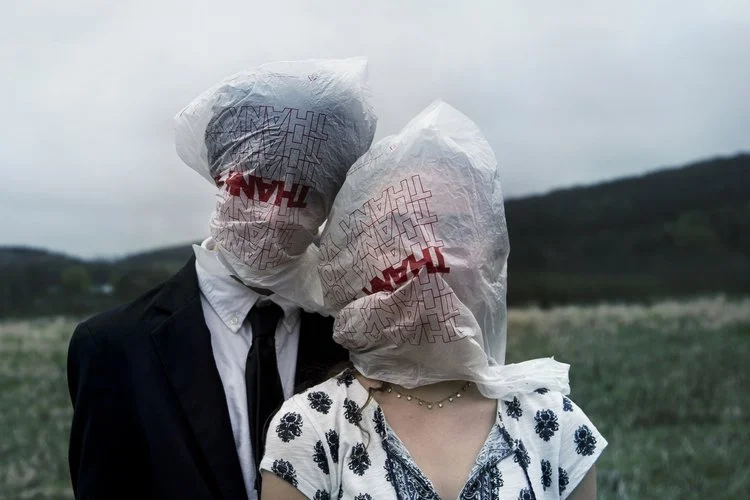Woman Crush Wednesday: Rinchen Ato
Horse Race Festival © Rinchen Ato
“I'm aware that the Tibetan communities have been photographed a lot by Chinese and Western photographers. They are often cast in a romantic light, or as foreign or 'other,' so it's essential to me that my work is seen as different from that as to me, it is familiar.”
Interview by Qimei Fu
Can you talk about what keeps attracting you to Kham and photograph again and again for 20 years?
Kham is an incredible place. It's where my father's family is, and I feel very connected to it. It's one of the most beautiful locations on earth, a remote and rugged land with a society where little had changed for centuries until recently. The region is mountainous, consisting of high altitude grasslands. You have no idea how many stars there are until you've seen the night sky above the plateau. Culturally, the Khampas are very generous and hospitable people; you can't go to someone's house without being offered a cup of tea and often a whole meal.
I always thought it was the place that I loved, and of course, I do. But since losing both my Aunts, I have realized that it is the people that keep me going back, my family and my friends.
Finished School © Rinchen Ato
What are some changes you observe over the years?
My work was recently described as "super-nostalgic and realistic." The nostalgia stems from the fact that I have seen dramatic changes over the past few decades. My father says the country has gone from the Bronze Age to the 21st Century in 50 years, which is absolutely true. When we first went there, we traveled on horseback, and now we can fly into the nearest town. With the mass migration of people to the city, many of the villages are abandoned, and some of the communities' nomadic lifestyle will not survive much longer. Now you go out for dinner, and everyone is on their phones, on social media. It's sad for me as I see what they are losing, the close-knit communities, and a self-sufficient life but who am to oppose their development? It's unfair to expect society to stay static for the sake of a romantic ideal of what life could be. More children go to school than ever, the healthcare system is better, and general sanitation and living conditions have greatly improved.
Foot and Mouth © Rinhen Ato
Does Kham's culture influence your perspective?
My father has been a huge influence on me. Despite the hardships he has faced, he remains so positive and finds such happiness in life. He reminds me to slow down, to be observant, calm, and appreciate what I have. I'm aware that the Tibetan communities have been photographed a lot by Chinese and Western photographers. They are often cast in a romantic light, or as foreign or 'other,' so it's essential to me that my work is seen as different from that as to me, it is familiar.
LhamoTsertso & Lobsang Chödron © Rinchen Ato
Your work is full of tenderness and intimacy. How do you work with your models?
I'm a social person. I'm interested in and love to be around people. I guess it has naturally evolved into my focus. I never construct an image or ask someone to pose in a certain way. They are all just moments I have seen and turned my lens to. Many of the more intimate moments are of my friends and family, who mostly ignore me and my camera. That's not to say I avoid candid shots, but if I am photographing someone I don't know about their culture or background, I will always ask their permission after.
I guess the first step in the process is what you focus on. Mary Ellen Mark said, 'It's not when you press the shutter, but why you press the shutter' The second step is how. Photography is such an intrusive act. People often do one of two things; they act up or get shy, but either way, it becomes a barrier to who they are or what they are feeling. When making a portrait, some photographers work within that space and focus on the awkwardness, but I'd rather not. One beautiful thing about Hasselblad is that, once you've focused the shot, you can look up at your subject and talk to them. I feel like this way, and trust is formed between you and that individual, which allows you to take that picture. The hope is that, with this respectful act, the subject is more receptive, you give them control of that moment, leading to a more genuine image of them.
Black Valley © Rinchen Ato
Describe your creative process in one word.
Compassionate.
If you could teach a one-hour class on anything, what would it be?
To focus on what you love and to work hard. I think this is the recipe for a happy career, and I wish it was taught at secondary school!
What was the last book you read or film you saw that inspired you?
'The Great 14th: Tenzin Gyatso, The 14th Dalai Lama In His Own Words'. It broke my heart.
What is the most played song in your music library?
Too many and too varied to choose!
How do you take your coffee?
When I'm tired.
The Rongbo Family © Rinchen Ato













